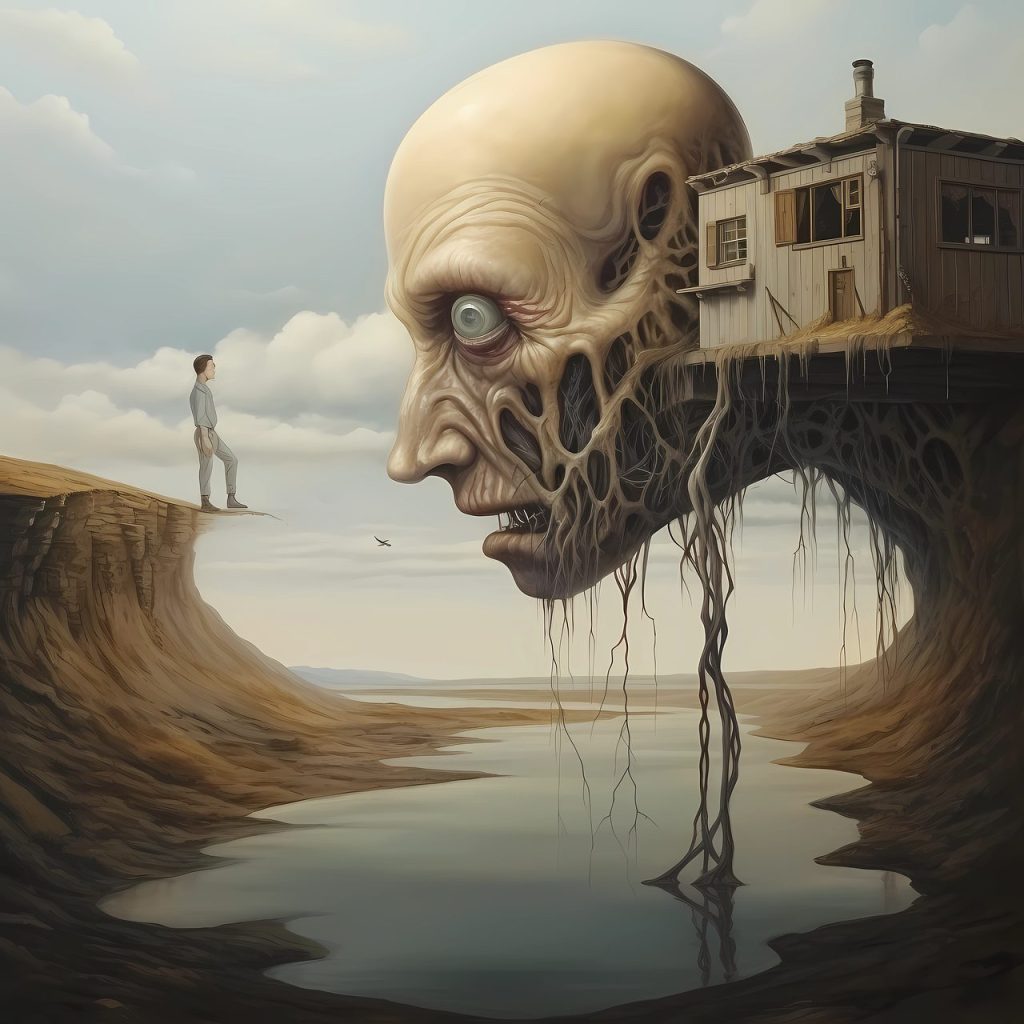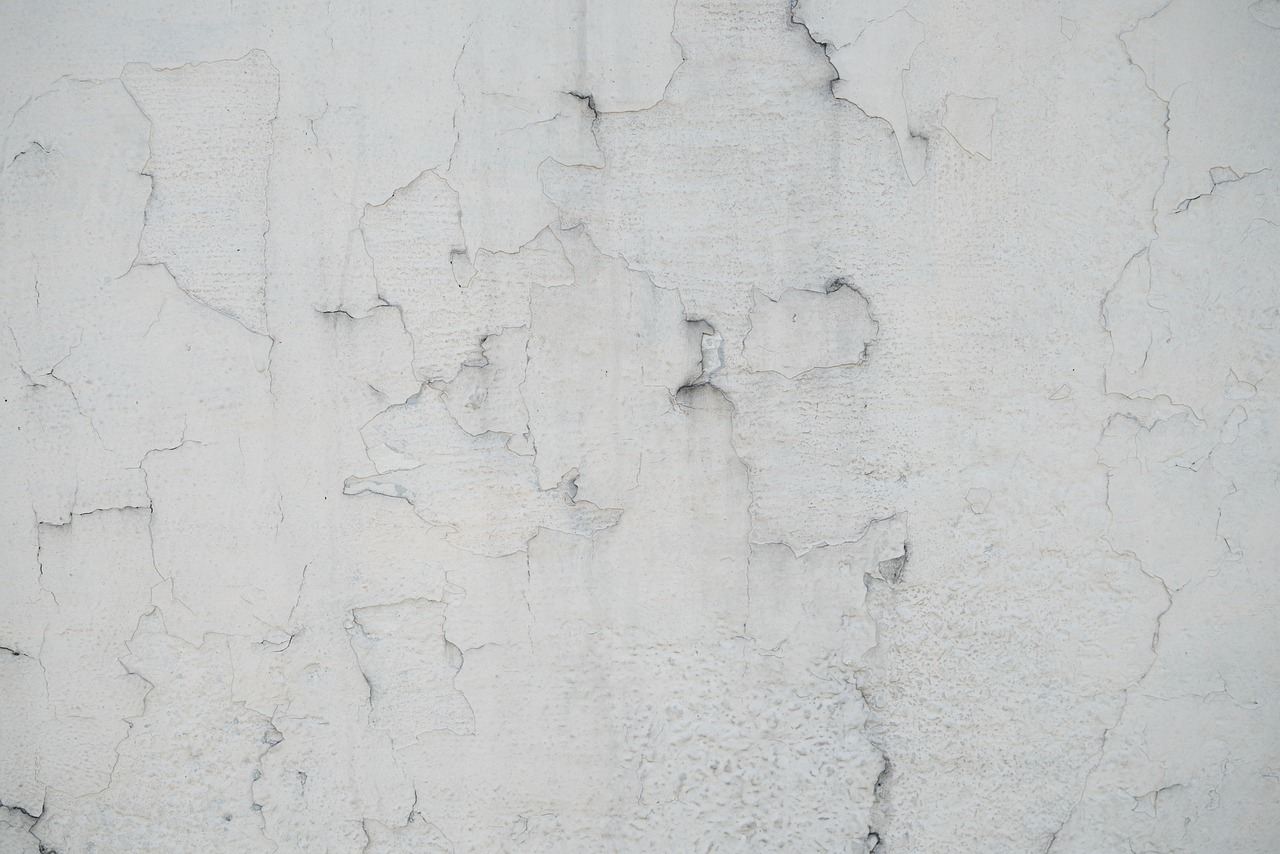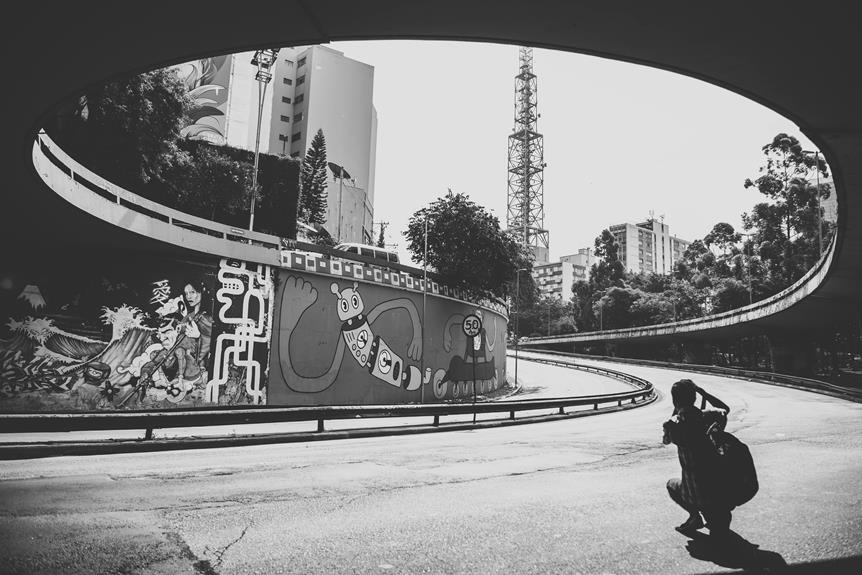Dark Art

Dark art captivates by plunging into macabre themes and existential questions, originating in the medieval period with artists like Hieronymus Bosch and Hans Memling. They compelled society to confront uncomfortable truths using dramatic contrasts and symbolic imagery. Key figures such as Caravaggio, Salvador Dalí, and Zdzisław Beksiński expanded these themes, exploring psychological depths and societal critiques. Modern dark art employs digital mediums and surreal elements to evoke strong emotional reactions and comment on contemporary issues. Through its rich symbolism of skulls, ravens, and snakes, dark art challenges perceptions and norms, inviting you to explore its multifaceted narrative further.
Key Points
- Origins: Dark art began in the medieval period, reflecting societal anxieties and existential questions.
- Key Artists: Influential artists include Hans Memling, Hieronymus Bosch, Caravaggio, Salvador Dalí, and Zdzisław Beksiński.
- Techniques: Dark art employs dramatic contrasts, chiaroscuro, and surreal elements to evoke emotional depth and introspection.
- Symbolism: Common motifs include skulls, ravens, and snakes, often symbolizing danger, mystery, and existential themes.
- Modern Interpretation: Contemporary dark art uses digital mediums and techniques to explore societal issues and personal struggles.
Origins and History
In tracing the origins and history of dark art, one discovers its roots in the medieval period where artists like Hans Memling and Hieronymus Bosch began to explore macabre themes and mysterious imagery. This early evolution of dark art was marked by a fascination with death and the supernatural, serving as a mirror to society’s anxieties and existential questions.
The impact on society was profound, as these artworks compelled viewers to confront uncomfortable truths about human nature and mortality. Over time, dark art evolved, continuously reflecting societal undercurrents and critiques. Its persistent allure lies in its ability to provoke introspection and challenge conventional narratives, making it a powerful medium for both historical and contemporary artistic expression.
Key Artists and Influences
Many pivotal figures have shaped the Dark Art Movement, each bringing unique perspectives and deepening the genre’s exploration of human psychology and societal critique. Key historical figures like Hans Memling, Hieronymus Bosch, and Caravaggio laid the groundwork with their depictions of macabre art, drawing from the Danse Macabre‘s artistic inspirations. Their works explore psychological depths and emotional expression, reflecting the darkest aspects of their experiences and societal issues.
Surrealist artists such as Salvador Dalí and Zdzisław Beksiński expanded these themes, showcasing modern scenes and societal critiques. Their cultural impact is profound, offering a platform for critical and protest art that continues to resonate with audiences and influence the movement today.
Techniques and Styles
Employing a range of techniques and styles, dark art captivates audiences by exploring dramatic contrasts, surreal elements, and symbolic imagery to probe into the human psyche and societal critiques.
Artists utilize chiaroscuro mastery to achieve dramatic impact, creating a stark interplay between light and shadow that emphasizes emotional depth. This technique not only enhances visual intensity but also draws viewers into the psychological landscapes of the artwork.
Additionally, surrealistic techniques are often employed to investigate subconscious thoughts and emotions, allowing for a richer, more profound engagement. By juxtaposing the real with the fantastical, dark art challenges perceptions and evokes introspection.
These methods collectively craft a compelling narrative that scrutinizes the darker aspects of human experience and societal norms.
Symbolism in Dark Art
Why does dark art captivate us with its rich tapestry of symbolism, weaving motifs like skulls, ravens, and snakes to probe themes of death, darkness, and transformation? Color symbolism plays an essential role, with black, red, and deep purples evoking danger, mystery, and the unknown. Artists use hidden meanings and religious icons like crosses and pentagrams to challenge traditional beliefs, inviting controversial interpretations. Symbolic elements such as shattered mirrors and wilted flowers explore themes of destruction and despair.
| Motif | Symbolism | Themes |
|---|---|---|
| Skulls | Mortality | Death |
| Ravens | Omens, Intelligence | Darkness |
| Snakes | Rebirth, Danger | Transformation |
Dark art thus delves into psychological depths and existential questions, reflecting darker human nature aspects.
Modern Interpretations
Frequently, modern interpretations of dark art leverage digital mediums and innovative techniques to explore the complexities of contemporary societal issues and personal struggles. By using digital art and photography, artists can create visually striking pieces that serve as societal commentary, addressing themes like mental health, political unrest, and existential dread.
Contemporary techniques, such as 3D modeling and digital manipulation, allow for a profound emotional impact, pushing boundaries and challenging traditional norms. These artworks often blend surrealism, horror, and macabre elements to evoke strong reactions, compelling viewers to reflect on the darker aspects of the human experience.
In doing so, modern dark art provides a nuanced lens through which to understand the multifaceted nature of today’s world.
Frequently Asked Questions
What Is Dark Art Called?
You’d call it “Dark Art,” a term embodying Gothic symbolism and macabre aesthetics. It explores society’s darker facets, challenging norms through surreal, thought-provoking visuals. This genre encourages self-reflection and critique, blending art with profound messages.
What Is the Dark Art Style?
The dark art style, shaped by Gothic influence and surreal elements, provokes self-reflection through macabre imagery and intense atmospheres. You’ll notice it often explores human nature’s primal side, challenging societal norms and conventions.
Why Do People Draw Dark Art?
You explore dark art for psychological exploration and emotional catharsis. It allows you to probe into your deepest fears and primal instincts, challenging societal norms and facilitating a raw, unfiltered expression of your innermost emotions and thoughts.
What Are Dark Tones in Art?
Dark tones in art involve deep, shadowy colors like black and grays that, through color psychology, evoke emotions like fear or introspection. Artists use shadow techniques to create dramatic contrasts, emphasizing specific elements and adding complexity.
Conclusion
In exploring dark art, you’ve immersed yourself in its rich origins and history, studied key artists and their influences, and analyzed various techniques and styles.
You’ve also unearthed the deep symbolism embedded within this genre. Today, modern interpretations continue to evolve, reflecting contemporary issues and emotions.
Dark art remains a compelling, multifaceted form of expression that challenges viewers to confront the shadows within themselves and society. Its enduring relevance speaks volumes about the human condition.
Author: Rupert Ulrich

